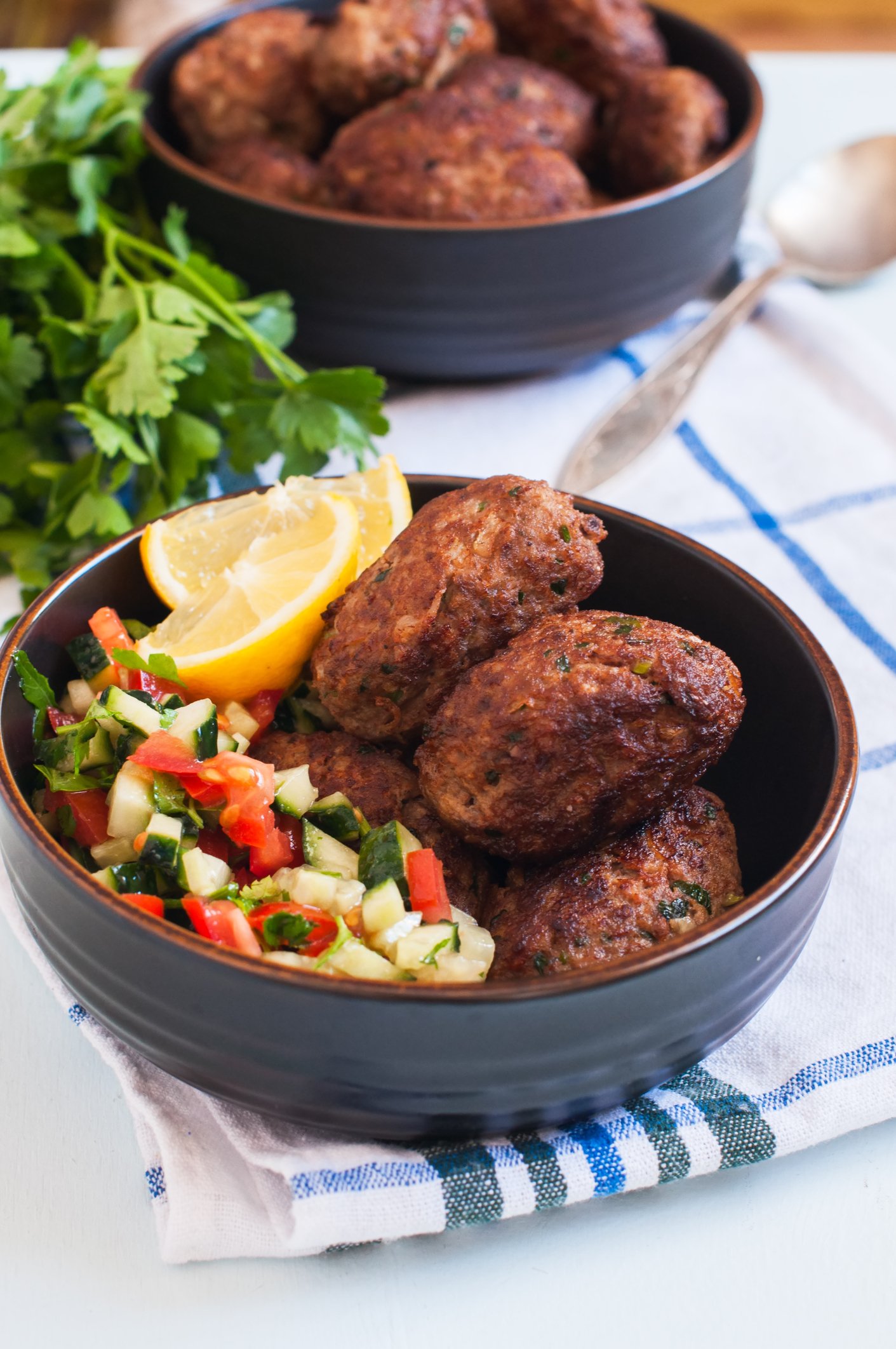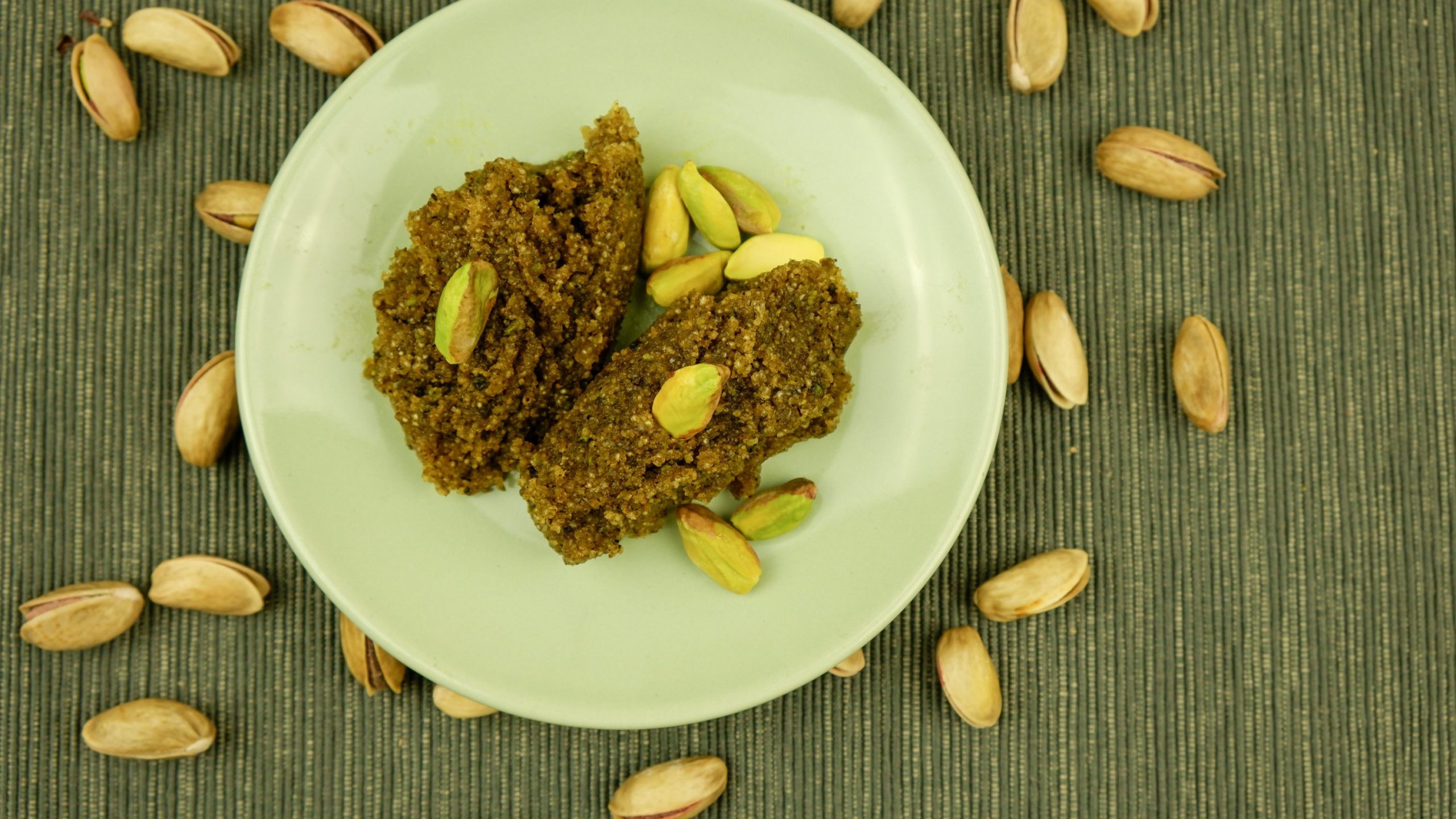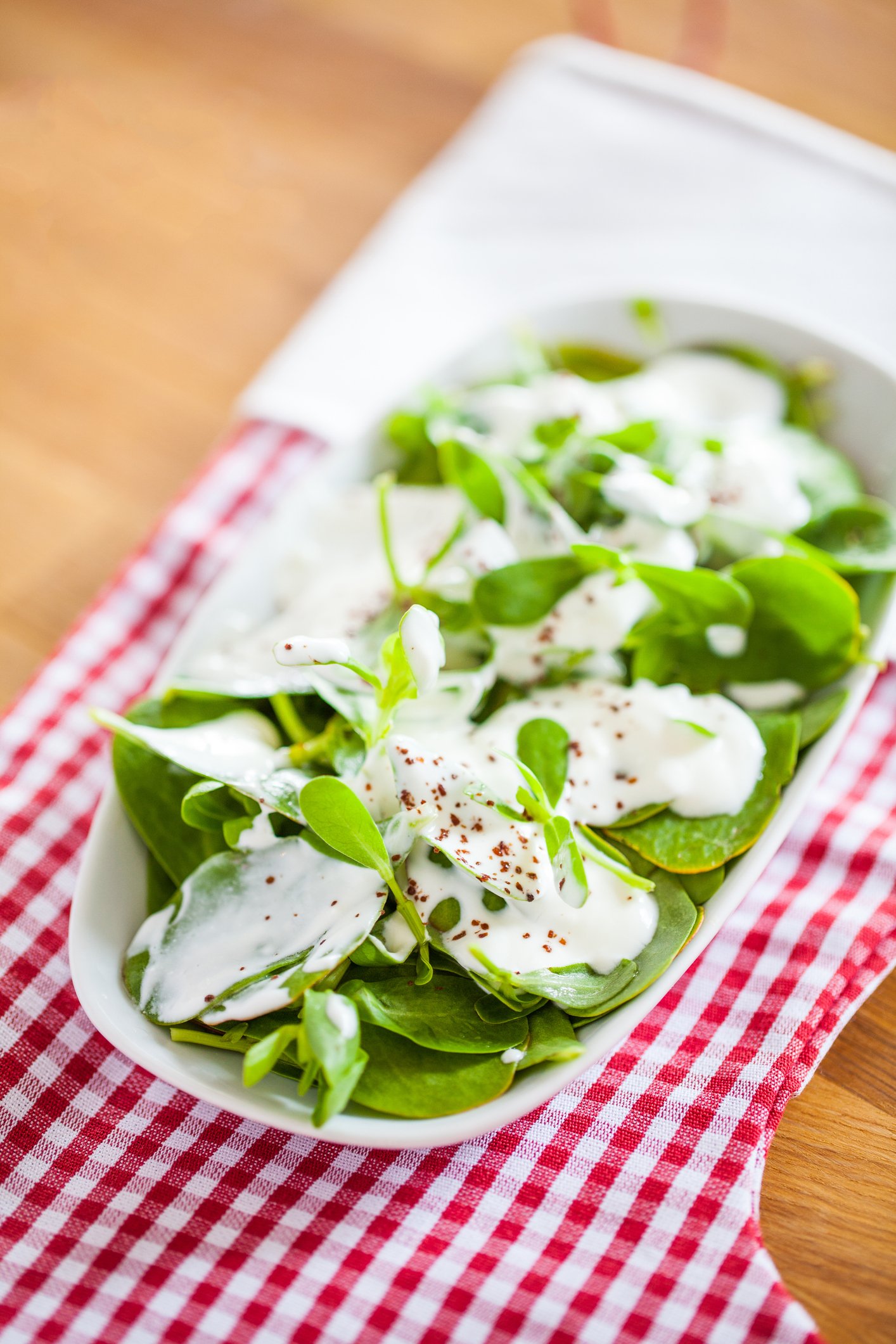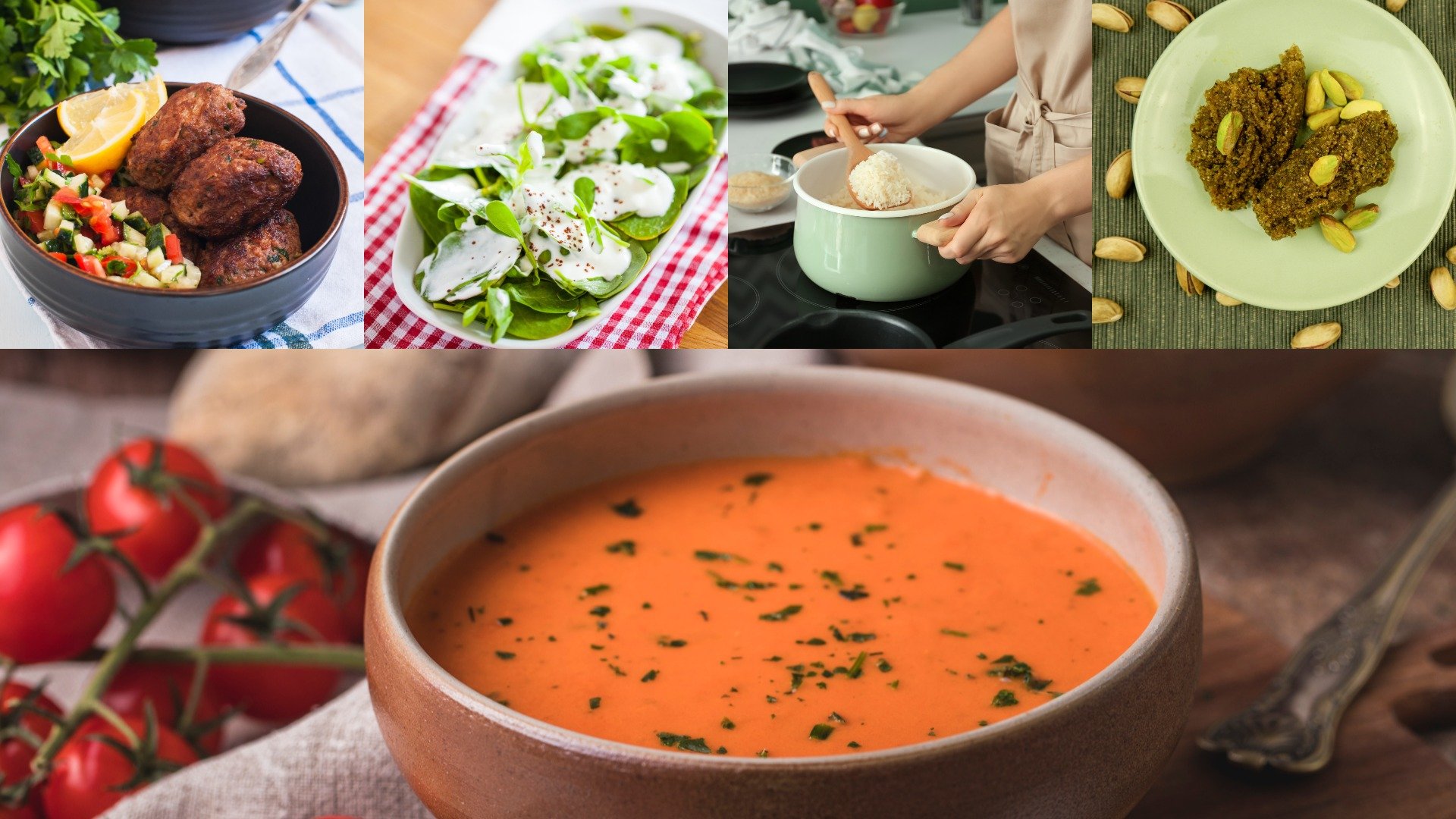Thinking of what to cook next is mentally draining, especially when you are fasting, and most often you end up cooking the same dishes or its variations for weeks. Now that we are in Ramadan, you might want to spice it up and make it worth the effort. That’s why for the Muslims’ holy month of fasting, we are presenting four specials each featuring three courses and a full menu to feast on once the time’s up (but please try not to eat too much at once when you break your fast; it’s not healthy).
This week’s menu is varied and delicious, comprising of creamy tomato soup, Turkish Cypriot köfte, traditional rice, Sultan Halva and a seasonal salad involving purslane.
Creamy tomato soup
A bowl of silky tomato soup to start off a menu is always an impressive option to wow not only your own tongue, but also your family or others in your household (if you are in lockdown together).

Ingredients
- 400 grams finely chopped tomatoes or tomato sauce
- 1.2 liters water
- 2 tablespoons butter
- 2 tablespoons flour
- 100 milliliters heavy cream
- salt and pepper (to taste)
- dried mint and cheese (optional garnish)
Instructions
In a wide pot, melt the butter, add the flour and cook them together until the flour starts to change in color. Add your finely chopped tomatoes or tomato sauce and continuously stir for 5 minutes so as not to burn it. Add the water and wait for it to boil. Once it starts boiling, add your salt and pepper and turn the heat off. Run the soup through a blender and finally add the heavy cream. Let it boil for an extra 5 minutes. In case your soup seems too thick, don’t hesitate to add more water. At that point, it is essential to get it boiling again so it incorporates into the mix. Top it off with a pinch of dried mint or grated cheese while serving.
Tips
- You can, of course, add more heavy cream to make it even creamier – Fat is a carrier of flavor after all.
- Into a more intensive tomato flavor? Add 2 tablespoons of tomato paste before adding the tomatoes. I am personally not a fan of the paste, so I avoid it, but you can add it to make the flavor pop even more.
Turkish Cypriot köfte
Meatballs, or köftes as we call them, are a staple of Turkish cuisine and usually are just made up of meat (it’s literally in the name). But not this one – at least not as much. These Cypriot köftes are known to be the more “economic” kind of meatball as they have potatoes in them that also help keep their shape really well. These are a good option if you want to stretch your last bit of minced meat.

Ingredients
- 200 grams minced meat of your choice
- 4-5 potatoes
- 1 onion
- 3 tablespoons bread crumbs
- 1 egg
- 1 bunch of parsley
- cumin, red pepper flakes, black pepper, salt (to taste)
- vegetable oil (for frying)
Instructions
First, you need to grate the potatoes and the onion. It is very important to squeeze out the excess water from the potatoes, but leave most of the water of the onions – we don’t want to lose that flavor. Add all the ingredients into a bowl and knead it until it is well incorporated. The longer you knead the better in my opinion. Now form the köftes into any shape you desire, I personally prefer patties the size of my palm but you can make balls, or elongated shapes as well. Fry the meatballs until they turn a golden brown color and serve with a side of…

Rice, plain and simple
A staple of many cuisines, especially Middle Eastern and Asian, rice is a versatile dish that goes with pretty much everything. We paired this with the köfte, but you could add this side to pretty much any menu.
Ingredients
- 300 grams rice
- 300 milliliters water
- salt
- 3-4 tablespoons oil
Instructions
Before you make your rice, you should know what kind of rice you’ll be using. I am using the “osmancık” type, which needs to be soaked in some hot water for 20 minutes prior to cooking. This step is not necessary if you are in a hurry, but it makes it easier to cook. Strain the water, add oil into a pot and fry the rice for a few minutes. Pour the boiling water onto the rice and add the salt in as well. Give it a good stir. Once it starts to boil, turn down the heat and close the pot with a lid. Check after 10 minutes and give the rice a stir. Depending on the kind of rice you use, you might want to add a bit more water (a couple of tablespoons) after 20 minutes of cooking. If the rice is cooked through, turn off the heat and serve.
Tips
- If you like things to get more crunchy, you can skip the stirring step after 10 minutes and just wait 20 minutes to get that crunchy crust that forms at the bottom. It’s my personal favorite, to be honest.
- Close to the end, you can add a tablespoon of butter for some extra flavor and give it a good stir. It does taste great but be careful not to overdo it.

Sultan Halva
Regular halva (helva) is indeed a quickly-made dessert, but creating it from plain flour or semolina is boring. Let’s spice it up with some pistachios, and here we’ve got ourselves some Sultan Halva.
Ingredients
- 140 grams semolina
- 150 grams pistachio meal
- 100 grams butter
- 300 milliliters water
- 250 grams sugar
- pistachios (to garnish)
Instructions
Put sugar and water into a small pot and bring it to a boil. Let it simmer for a few minutes and turn off. In a separate pot, melt the butter and add the semolina into it. Cook the semolina until it starts to change in color. Be careful not to burn it. Pour the syrup into the semolina mix, give it a good stir and turn the heat to its lowest. Close the pot with a lid and let the semolina absorb the syrup. Once that’s done, add the pistachio meal, mix until it is incorporated and turn off the heat. Let the halva rest for a few minutes before serving. Add scoops of halva onto a plate and garnish with a few whole or crushed pistachios.
Tips
- A scoop of vanilla ice cream goes really well with this kind of halva.
- The halva is usually served warm, but you can, of course, serve it at room temperature as well.
- Adjust the amount of sugar and pistachio to your desire. Some like it sweeter, some less. The choice is yours.
Extra: Purslane salad
To round these dishes off, a salad made out of seasonal vegetables is the perfect addition. April is the month of purslane in the eyes of Turks and here are two of my favorite salad variations:

The first one is the simplest: Pluck the purslane in coarse pieces and add yogurt to it. Give it a good mix and add salt and/or any other seasoning you like. I like adding some red pepper flakes and drizzle a bit of olive oil over it as well.
The second one involves, of course, purslane, tomatoes, an onion, corn (from a can) and red peppers. Olives can be a nice addition to this as well. Chop all of the ingredients (especially the onion, which need to be cut as thin as possible) and give it a good mix. Add some olive oil and “nar ekşisi” (pomegranate syrup, tastes like balsamic) and season to your desire.
I love to use the latter salad as a main dish with the addition of well-seasoned chicken strips fried in a pan and added on top.
Last Updated on Apr 26, 2020 2:36 pm










Discussion about this post